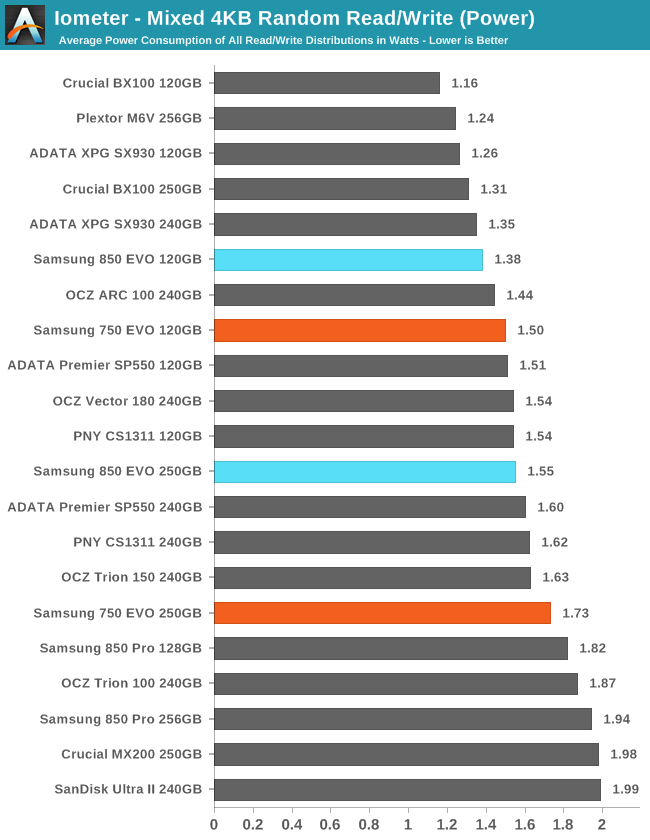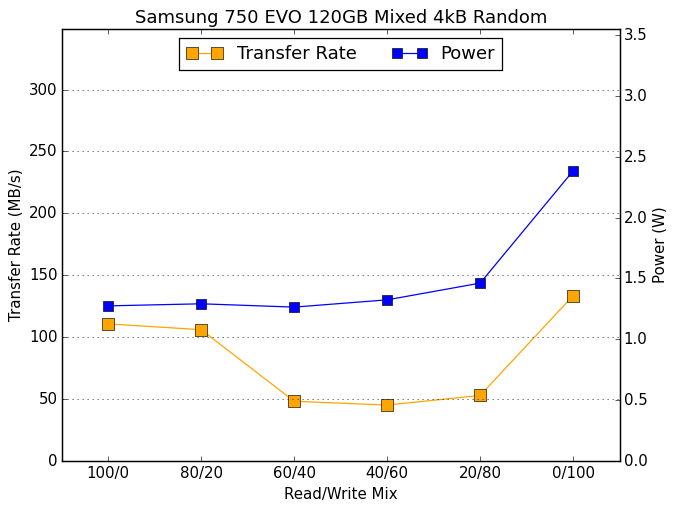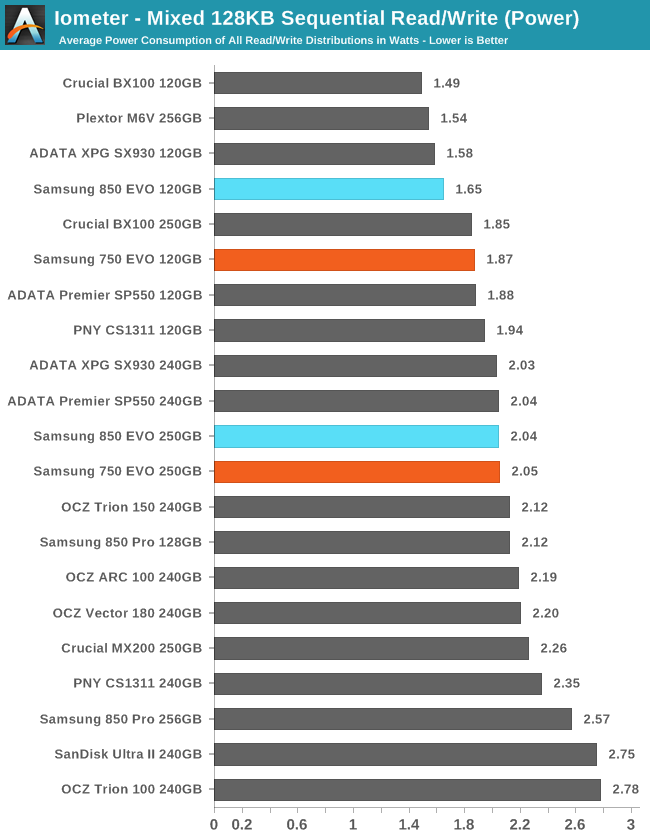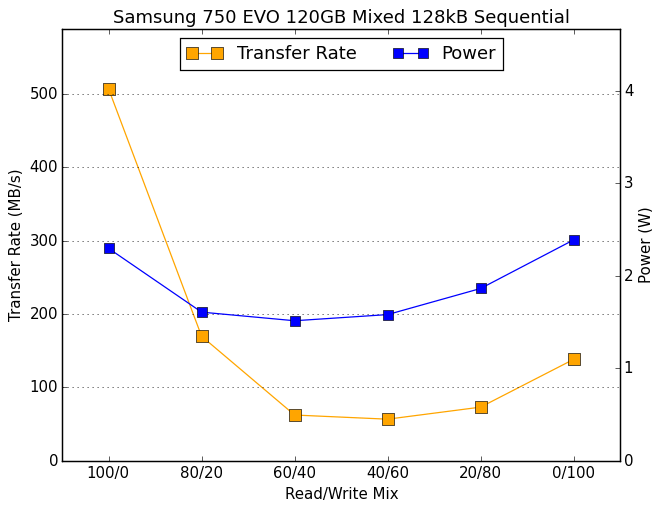The Samsung 750 EVO (120GB & 250GB) SSD Review: A Return To Planar NAND
by Billy Tallis on April 22, 2016 8:00 AM ESTMixed Random Read/Write Performance
The mixed random I/O benchmark starts with a pure read test and gradually increases the proportion of writes, finishing with pure writes. The queue depth is 3 for the entire test and each subtest lasts for 3 minutes, for a total test duration of 18 minutes. As with the pure random write test, this test is restricted to a 16GB span of the drive, which is empty save for the 16GB test file.

The 750 EVO outperforms any non-Samsung drive of similar capacity on the mixed random I/O test, and the 120GB 750 EVO even beats a few MLC drives with twice the capacity.

The 750 EVO has above-average power efficiency during the mixed random I/O test.
 |
|||||||||
Most drives lose performance during the middle phases of the mixed random I/O test. High performance scores on this test rely on performance bouncing back during the final phase of the test when the workload shifts to pure writes. The 750 EVO's spike at the end is noticeable though not huge, but it also benefits from comparatively good performance in the first two sub-tests.
Mixed Sequential Read/Write Performance
The mixed sequential access test covers the entire span of the drive and uses a queue depth of one. It starts with a pure read test and gradually increases the proportion of writes, finishing with pure writes. Each subtest lasts for 3 minutes, for a total test duration of 18 minutes. The drive is filled before the test starts.

Unlike for the mixed random I/O test, most MLC drives are able to maintain a clear performance lead over the planar TLC drives—including the 750 EVO.

The 750 EVO's power consumption is low enough that it is clearly the most efficient planar TLC drive, but its efficiency doesn't beat a typical MLC drive.
 |
|||||||||
The 750 EVO has great read speed, but it bottoms out at a relatively low level during the middle of the test and doesn't bounce back at the end as much as most MLC drives and the 850 EVO.










109 Comments
View All Comments
Meteor2 - Saturday, April 23, 2016 - link
Can't you come up with a more insightful comment, rather than a personal jibe?Eden-K121D - Sunday, April 24, 2016 - link
His Name Speaks VolumesBrokenCrayons - Monday, April 25, 2016 - link
Wouldn't embracing the internet mean using offsite storage or streaming content rather than storing it locally?cm2187 - Friday, April 22, 2016 - link
Any news on Samsung's 4TB SSDs?trparky - Friday, April 22, 2016 - link
Crap. Does this mean that production of the 850 EVO will stop? God I hope not, the 850 EVO is still a clear winner in my mind.Kristian Vättö - Friday, April 22, 2016 - link
Absolutely not. The 850 EVO and PRO will continue to be available - the 750 EVO is just a new entry-level addition to the lineup.Coup27 - Friday, April 22, 2016 - link
What part of the article gave you that impression?trparky - Saturday, April 23, 2016 - link
I was thinking along the lines of the 750 EVO replacing the 850 EVO in the product lineup. That's something I hope doesn't happen.StrangerGuy - Friday, April 22, 2016 - link
Enjoyed the bottom to the barrel, cost cutting to the max 768p crappy laptop TN LCDs? Now coming to every future consumer SSDs near you.ingwe - Friday, April 22, 2016 - link
I'll take a cheap SSD over a shitty 768p panel any day!